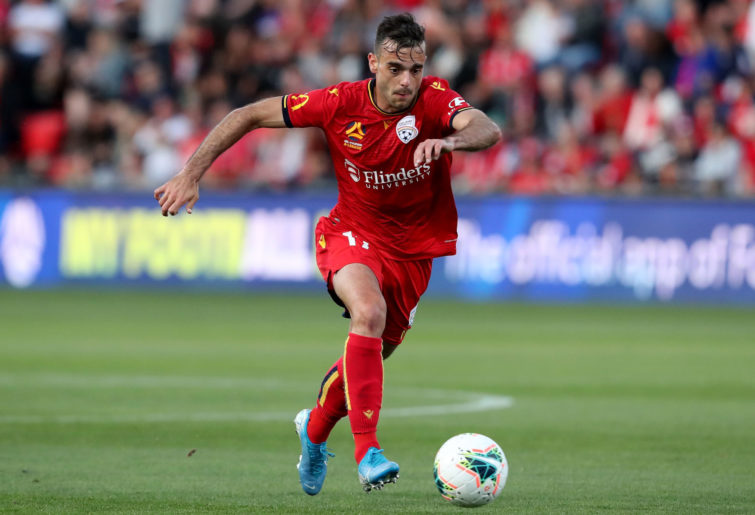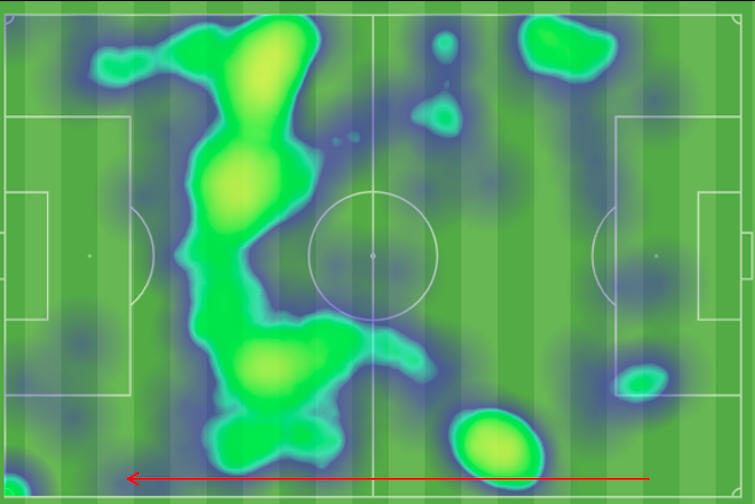The Roar's A-League Men tips and predictions: Round 26 - the jostle for finals positions is on in earnest
Here is the way the Roar expert panel sees all the action unfolding across the final weekend of play prior to the semi-finals.
Opinion
It’s hard to talk about football tactics without mentioning formations. Whether your team is playing in a classic 4-4-2, an aggressive 4-2-3-1 or perhaps a stifling 3-5-2, it’s thought to define your team.
Within formations are nuances that separate them.
Even if they share the same digits, two setups are rarely the same. The roles performed within formations are far more important and define a team’s style more than any number could.
One of the best examples of this come from wingers.
In the A-League, there are plenty of different types of wide forwards depending on the player’s own qualities as well as how those skills fit in with the needs of the team.
Here are some examples of how Australian clubs deploy their widest players on the park.
Adelaide United: Traditional wingers
The first image of a winger is likely to be those rapid forwards who get wide before crossing it for teammates waiting in the box. Think Robert Pires at Arsenal or Ryan Giggs at his peak with Manchester United.
Locally, we have Adelaide United maximising the pace of Nikola Mileusnic and Ben Halloran to make runs behind the defence in wide areas before squaring the ball to targets.
Head coach Gertjan Verbeek instructs the duo to stay wide, looking to make their move in transition when there is space to run during the counter attack. James Troisi, from a deeper position in the midfield, pings long through-balls for them to chase down.
An important part of United’s game plan is they don’t waste their opportunities in wide areas. Halloran and Mileusnic don’t usually aim for aerial crosses because they don’t have strikers that are dominant in the air, so they smartly look to play the ball to the feet of their strikers.
Riley McGree, in particular, has benefited from this style, as his late runs into the box perfectly suit Verbeek’s style of play.

(AAP Image/James Elsby)
Melbourne City: Inverted wingers
It used to be common for teams to set up with right-footed players on both the right and left flanks. While right-sided forwards could cross the ball in with their stronger foot, those on the other wing would be disadvantaged since their crosses would have to come in through their weaker left foot.
The answer to this problem came with the inverted winger. These wingers initially pick up the ball in a wide position before cutting the ball inside rather than running down the byline. Later, left-footed players on the right were also popularised by Bayern Munich’s Arjen Robben, who you always knew would come inside to launch a shot, but there was nothing you could do to stop him.
This season we’ve seen Melbourne City’s Craig Noone play in the typical Robben style when he’s deployed on the right flank. He almost always receives the ball out wide and then cuts back in, either for a shot or a cross – and sometimes both in the same sequence:
The statistics reinforce his eagerness to move the ball into dangerous areas, with Noone being one of the most prolific crossers and shooters of the ball. His expected goals numbers suggest he takes far too many long attempts when he’s dribbling towards those central areas.
At times, City head coach Erick Mombaerts has been confused with how to use the Englishman. Noone started the season usually playing on the left side, before moving him to the right, then left again and then both in the same match. Finally, Noone seems set to stay on the right where he is encouraged to play inwards and come onto his stronger foot.
Mombaerts certainly has an ‘inverted’ theme going on in his team, with his fullbacks also playing in a similar style further back in defence.
Sydney FC: Wide number 10s
When Alexander Baumjohann was brought to Sydney from their western rivals, there were questions on how Steve Corica would fit in two dynamic playmakers in that creative attacking position.
The answer, we learned, was that Baumjohann and Milos Ninkovic would share their responsibilities by playing as wide number 10s. They like to play in the central areas of the pitch much like Noone, but are more focused on covering every single blade of grass laterally in that space behind the midfield but ahead of the defence, which their heatmap against Newcastle Jets from a few weeks ago perfectly shows:

Where having to track one is hard enough, the dual threat of Sydney’s midfielders has made them both almost impossible to mark for A-League defences. It requires a hard-working and switched-on defence to stop them. No team has been entirely successful at thwarting them.
Give them any space at your own peril. The creative tandem has punished defences time and time again with inch-perfect through balls, or via their quick, sudden darts behind the defence that leave their opposition reeling:
Formations only tell a small part of any story; they can’t fully explain the nuances of the roles each player has on the pitch. The evolution of wingers from someone that’s just required to pump the ball into the box to the many different varieties we see now is a testament to that.
The A-League continues to adapt as well. Many of the teams might share similar formations, but when they face off against each other, you can see how those differences change the result of the match.